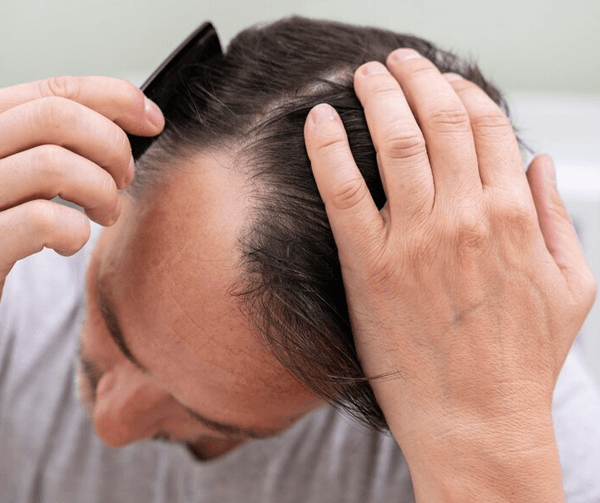Over the past few years, there have been several innovations in the field of hair transplant; however, in the general population, there are still numerous misconceptions. As a matter of fact, if a normal person were to be asked about hair transplant, they would have more myths in their mind, as opposed to facts.
This article and the following one, aims to look at some of the most popular misconceptions related to hair transplant and dispel them with the actual facts.
Top 10 myths of hair transplant busted !!!
Myth 1: Hair Transplant is an unsafe method & can lead to problems in head, eyes or brain
Whenever you start thinking about a hair transplant, someone from your family / friends may warn you not to undergo hair transplant as it is an unsafe procedure. And it can damage the head, brain or eyes as you are undergoing  a procedure on your scalp. However, on closer look at the procedure, you will appreciate that there are five layers of scalp and we are working in the first layer only which rules out the chances of the underlying areas being affected. And experienced clinics will take all the precautions required, so you can be rest assured that the procedure will be safe. There may be small issues such as redness, slight itching and in some cases, even shedding, but these are a part of the natural course of a transplant and will fade away in no time. The extreme complications usually occur in the hands of inexperienced ones only.
a procedure on your scalp. However, on closer look at the procedure, you will appreciate that there are five layers of scalp and we are working in the first layer only which rules out the chances of the underlying areas being affected. And experienced clinics will take all the precautions required, so you can be rest assured that the procedure will be safe. There may be small issues such as redness, slight itching and in some cases, even shedding, but these are a part of the natural course of a transplant and will fade away in no time. The extreme complications usually occur in the hands of inexperienced ones only.
Myth 2: Transplanted hair do not grow
The hair for the transplant procedure is taken from your own head. Each hair is taken out, along with the root, which is why the hair has the capacity to grow. Infact, if the procedure has been done properly, you will not be able to distinguish whether a transplant has been done or not. Properly implanted hair grow in the same way as the natural hair. As a matter of fact, your will be able to cut and color your hair, the way you would normally do in a matter of a few weeks.
Myth 3: Hair transplant is a painful procedure
Almost every transplant procedure is conducted under anesthesia, which means that the person undergoing the transplant will not feel any pain. There might be a little discomfort, but most people can enjoy watching a movie, reading a book or even talking to the staff, while the procedure is being completed. We take special care of giving anesthesia in which we apply special gel before giving anesthesia and make use of vibrator which makes the procedure hardly discernable. Even after the procedure has been completed, there is little or no pain, only the occasional discomfort or irritation, which tends to fade away with time.
Myth 4: A Hair transplant will not provide natural results
If done by an expert doctor, there is no reason why a hair transplant will not look natural. When a professional handles your hair transplant, they will ensure that each hair follicle is extracted with care. When these follicles are implanted in your scalp, in the direction is made corresponding to the natural hair, eventually leading to a tandem growth. In addition, the doctors will ensure that the scars are minimal or well hidden. With these steps being taken, there is no reason why a hair transplant will not look natural.
Myth 5: The hair that has been transplanted will fall off
Some people think that the transplanted hair grow for sometime and then fall off. But for your information, the transplanted hair which grow… last for a lifetime and do not fall off. However, you must understand the natural life cycle of the transplanted hair. The transplanted hair fall 2- 3 weeks after implantation. After that, they start coming back, 10% every month to give the best results in 9-12 months.
Myth 6: The hair that has been extracted from the donor area will regrow
Some people believe that the donor are from where the grafts have been extracted will come back. But if you look in detail, the extracted hair have got the root, which means that the donor area is now deprived of the hair root, hence it will leave an empty space in the donor area. Herein, comes the role of an experienced doctor who takes out the grafts in such a way that the empty spaces are hidden by the overlapping hair.
Myth 7: People of a certain age can only undergo hair transplant
The truth could not be farther from this, because people of almost all ages from 20s to 70s can undergo hair transplant depending upon the indication. The ones who are beyond their 30s & 40s are the most ideal candidates. This is so because the hair loss pattern has stabilized and chances of losing more hair is reduced. This means, that the doctor can easily identify the donor area as well as the area that needs the transplant. Our eldest patient has been 73 years old doctor who underwent the second hair transplant procedure and the youngest one 18 years old boy who had traction alopecia ( as the pattern of hair loss had stabilized in his case).
Myth 8: Unlimited hair extraction is possible from scalp
Many a times, you come across an advertisement which says Unlimited hair from head in ….x,y,z money…But in reality, the amount of hair that can be extracted depends on the donor site is is not unlimited. There is actually a limitation of the amount of grafts that can be extracted in each session. The total number of hair in the donor area range between 12000-20000 follicles and normally, 1/8th of the available units can be extracted at a time. This translates into 3000-5000 hair follicles.
If more than the safe amount of hair follicles are extracted, there will be obvious thinning in the donor area. This will make the transplant process become obvious, because people will be able to notice the sudden thinning. In addition, in order to keep the thinning invisible, the person getting the transplant will have to keep long hair. The whole idea behind the modern hair transplant methods is that you should be able to wear your hair, the way you like it. Sticking to the 3000-5000 hair follicles limit will ensure that your transplant will not be detectable. If the number of grafts which are required is more, then the person can undergo second sitting and again 1/4th of remaining hair in second sitting and ½ of remaining hair in third sitting can be extracted without any appreciable change.
Myth 9: Women are not candidates for hair transplant
Some bald women are of the opinion that they cannot undergo hair transplant as this procedure is meant only for men. However, women are as suitable candidates as men, because they too have baldness. However, the criteria for women are different to men – as the pattern of baldness and the number of grafts which can be extracted is different. But the results are encouraging and every bald female patient should consider undergoing hair transplant.
Myth 10: The results will always be safe, no matter where you get it done
Absolutely not – the results are completely dependent on where you get the procedure done. If you choose to go to a clinic that has no real reputation and no experienced doctors, you can be sure that you might become susceptible to wastage and infections. However, if you opt for a clinic that is reputed, well equipped and has experienced doctors, you can be sure that you will be happy with the results.
Therefore, in order to reach this decision, it would be best to do your research before hand – browse the internet, talk to people who might have undergone hair transplant and visit a few clinics, in order to gain a firsthand understanding of how the place functions.








